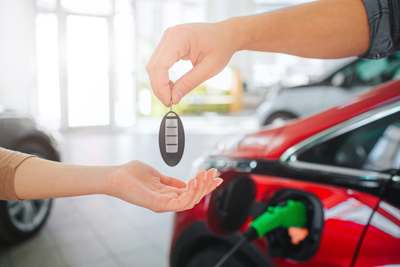California Gov. Gavin Newsom on Nov. 18 lifted up two major actions to advance the state’s groundbreaking efforts to get more clean cars, trucks and buses on the road through expanded vehicle purchase incentives and clean transportation infrastructure, especially in underserved areas, to make the transition to electric vehicles more accessible and affordable than ever.
The California Air Resources Board (CARB) on Nov. 17 approved a $2.6 billion investment plan to support a wide range of ZEV projects, with 70% of the funds directed to disadvantaged and low-income communities---the state’s largest-ever investment in the equitable expansion of clean transportation. Support for low-income consumers includes up to $19,500 for those who have an older car to scrap.
Also Nov. 17, the California Public Utilities Commission (CPUC) adopted a $1 billion transportation electrification program to fund ZEV charging infrastructure, with additional incentives for projects in hard-to-reach communities.
“California is leading the world in the zero-emission vehicle revolution while taking action to ensure that those most burdened by air pollution share in the benefits,” said Newsom. “These bold investments to provide cost-saving incentives and expand access to ZEV charging infrastructure in all our communities bring us that much closer to making our clean transportation future a reality in California.”
These investments are funded in part by the historic $10 billion ZEV package advanced by Newsom and the Legislature as a key component of the multi-year $54 billion California Climate Commitment.
CARB’s $2.6 billion investment plan includes funding for a variety of projects and makes important program changes:
$2.2 billion for clean trucks, buses and off-road equipment: This includes more than $2 billion for zero-emission trucks and buses and off-road equipment including school buses, transit buses and drayage trucks; $33 million for financing for small truck fleets transitioning to cleaner technologies; and $135 million for demonstration and pilot projects, including commercial harbor craft.
$381 million for clean transportation equity projects: This includes $326 million for vehicle purchase incentives and $55 million for clean mobility investments.
Support for low-income consumers looking to purchase an electric car: Up to $15,000 in incentives for new electric vehicles without having to scrap an older vehicle and up to $19,500 for those who have an older car to scrap---an increase of $3,000 from current incentive levels.
Streamlines and aligns programs: Simplifies income eligibility tiers to at or below 300% of the Federal Poverty Level and offers $2,000 prepaid electric vehicle charge cards for low-income consumers.
Small fleet support: Introduces tiered voucher amounts to increase support for small fleets while encouraging early adoption of zero-emission technologies and large-scale deployments of zero-emission trucks in disadvantaged communities.
Support for commercial harbor craft: Dedicates $60 million for cleaner commercial harbor craft.
The CPUC’s $1 billion transportation electrification program provides a unified policy-driven funding structure for utility transportation electrification efforts statewide through 2030, and prioritizes investments in charging infrastructure for low-income, tribal and underserved utility customers.
The program will direct 70% of funding to charging for medium-and heavy-duty vehicles, which are responsible for a disproportionate share of air pollutants from the transportation sector, and will offer rebates for customer side electric vehicle infrastructure investments. Higher rebates will be available for projects in underserved, disadvantaged and tribal communities to ensure charging infrastructure reaches these hard-to-reach communities.
Electric vehicles are one of California’s top exports and the state is home to 43 ZEV-related manufacturers. ZEVs comprise 18% of all new vehicles sold in California.
Source: Office of Gov. Gavin Newsom










Abby Andrews